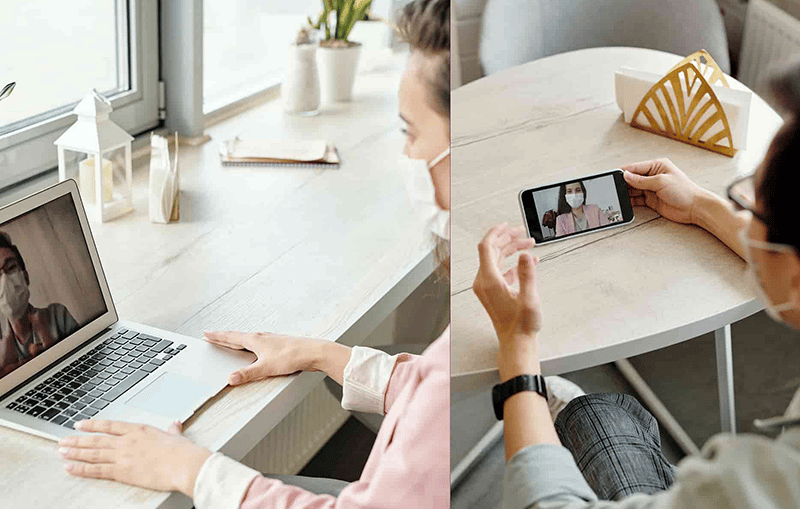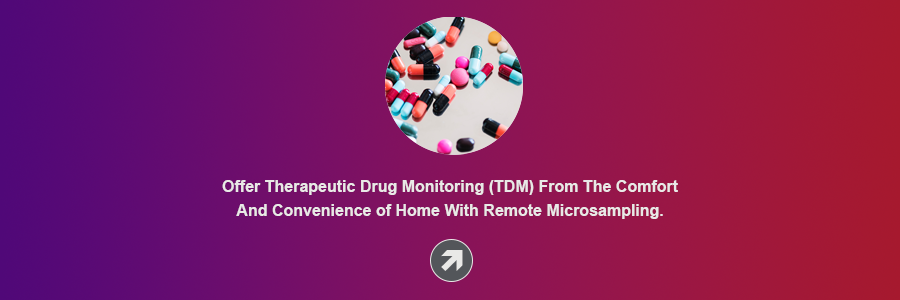Share this
new year, new perceptions of virtual healthcare
by Neoteryx Microsampling on Jan 11, 2021 9:00:00 AM
 Virtual healthcare is gaining momentum. Since early 2020, virtual care has become crucial in helping patients maintain their well-being, even when they aren't able to travel to hospitals and clinics. Telehealth and telemedicine facilitate the diagnosis and treatment of illnesses without a physical visit to the doctor’s office.
Virtual healthcare is gaining momentum. Since early 2020, virtual care has become crucial in helping patients maintain their well-being, even when they aren't able to travel to hospitals and clinics. Telehealth and telemedicine facilitate the diagnosis and treatment of illnesses without a physical visit to the doctor’s office.
This proved advantageous for many people in 2020 as the coronavirus pandemic forced them to shelter safe at home during lockdowns. A forecast by the Deloitte Center for Health Solutions indicates that by 2040, the healthcare system we knew prior to 2020 will have undergone a complete overhaul, with telemedicine becoming more prominent.
The future of telemedicine was shaped sooner-than-expected due to COVID-19, which provided many healthcare professionals an unexpected opportunity to integrate virtual care options into their health programs.
One research report shows an intense desire among physicians to continue using telemedicine after the pandemic. This desire or preference is primarily associated with:
- Belief in the importance of adaptability
- Ease of performing physical examinations with telemedicine
- Higher satisfaction level in the quality of care (81% of patients who had virtual doctor visits preferred this option)
What is Virtual Healthcare?
“Virtual healthcare” refers to the interaction between a patient and healthcare provider through communication technology. The term is often interchanged with telemedicine, telehealth, and digital healthcare, though there are some distinctions.

Telehealth, for example, refers specifically to the communication channels used for virtual healthcare visits. Regardless of what you call it, "tele-care" facilitates smarter, easier, and faster delivery of healthcare services to minimize socio-demographic, geographical, physical and cultural barriers.
Virtual healthcare also eliminates risky exposure to contagions, as well as unnecessary travel, time, and the inconvenience of leaving home. It personalizes care, healthcare education, and awareness programs by meeting patients wherever they are.
This healthcare approach comprises more than just video conferencing. It includes phone calls, emails, and texts for remote patient monitoring in coordination with wearable devices and at-home specimen collection for lab testing.
In 2020, many hospitals, medical systems and wellness companies provided patients at home with home health kits and portable specimen collection devices, like the Mitra® device. These devices allow people to self-collect a small blood sample known as a "microsample" using a simple finger-prick method. Patients can mail their microsamples directly to the lab for testing, and follow up with their doctor for their test results.
In 2021 and thereafter, people may request this home-based, patient-centric approach to lab tests, which eliminates the need to visit a lab or clinic for a painful blood draw.
The 4 Cs of Healthcare
Virtual healthcare has the potential to deliver the four Cs that are crucial to the success of care delivery and consumer well-being:
- Care continuum that spans from well-being to post-acute care
- Connectivity that embraces synchronous and asynchronous modalities
- Continuity through home care or outpatient care
- Coordination that brings together all stakeholders in healthcare
The Future of Virtual Healthcare
In the new year and thereafter, virtual healthcare will likely become the near-default option for care and well-being in the medical sector.
What patients and practitioners may have previously dismissed as a "nice to have" but unnecessary option, will soon be the leading option, according to Michael Maron, President and CEO at Holy Name Medical Center.
Telemedicine and telehealth are quick, efficient, convenient and safe, making this approach more relevant in today's uncertain health climate, where limiting exposure to viral pathogens has become a matter of life and death.

To learn more about at-home Mitra® Collection Kits that can be sent to patients and study participants, click below:
Share this
- Microsampling (206)
- Research, Remote Research (119)
- Venipuncture Alternative (105)
- Clinical Trials, Clinical Research (83)
- Mitra® Device (73)
- Therapeutic Drug Monitoring, TDM (51)
- Dried Blood Spot, DBS (39)
- Biomonitoring, Health, Wellness (30)
- Infectious Disease, Vaccines, COVID-19 (24)
- Blood Microsampling, Serology (23)
- Omics, Multi-Omics (21)
- Decentralized Clinical Trial (DCT) (20)
- Specimen Collection (18)
- Toxicology, Doping, Drug/Alcohol Monitoring, PEth (17)
- Skin Microsampling, Microbiopsy (14)
- hemaPEN® Device (13)
- Preclinical Research, Animal Studies (12)
- Pharmaceuticals, Drug Development (9)
- Harpera Device (7)
- Industry News, Microsampling News (5)
- Antibodies, MAbs (3)
- Company Press Release, Product Press Release (3)
- Environmental Toxins, Exposures (1)
- July 2025 (1)
- May 2025 (1)
- April 2025 (2)
- December 2024 (2)
- November 2024 (1)
- October 2024 (3)
- September 2024 (1)
- June 2024 (1)
- May 2024 (1)
- April 2024 (4)
- March 2024 (1)
- February 2024 (2)
- January 2024 (4)
- December 2023 (3)
- November 2023 (3)
- October 2023 (3)
- September 2023 (3)
- July 2023 (3)
- June 2023 (2)
- April 2023 (2)
- March 2023 (2)
- February 2023 (2)
- January 2023 (3)
- December 2022 (2)
- November 2022 (3)
- October 2022 (4)
- September 2022 (3)
- August 2022 (5)
- July 2022 (2)
- June 2022 (2)
- May 2022 (4)
- April 2022 (3)
- March 2022 (3)
- February 2022 (4)
- January 2022 (5)
- December 2021 (3)
- November 2021 (5)
- October 2021 (3)
- September 2021 (3)
- August 2021 (4)
- July 2021 (4)
- June 2021 (4)
- May 2021 (4)
- April 2021 (3)
- March 2021 (5)
- February 2021 (4)
- January 2021 (4)
- December 2020 (3)
- November 2020 (5)
- October 2020 (4)
- September 2020 (3)
- August 2020 (3)
- July 2020 (6)
- June 2020 (4)
- May 2020 (4)
- April 2020 (3)
- March 2020 (6)
- February 2020 (3)
- January 2020 (4)
- December 2019 (5)
- November 2019 (4)
- October 2019 (2)
- September 2019 (4)
- August 2019 (4)
- July 2019 (3)
- June 2019 (7)
- May 2019 (6)
- April 2019 (5)
- March 2019 (6)
- February 2019 (5)
- January 2019 (8)
- December 2018 (3)
- November 2018 (4)
- October 2018 (7)
- September 2018 (6)
- August 2018 (5)
- July 2018 (8)
- June 2018 (6)
- May 2018 (5)
- April 2018 (6)
- March 2018 (4)
- February 2018 (6)
- January 2018 (4)
- December 2017 (2)
- November 2017 (3)
- October 2017 (2)
- September 2017 (4)
- August 2017 (2)
- July 2017 (4)
- June 2017 (5)
- May 2017 (6)
- April 2017 (6)
- March 2017 (5)
- February 2017 (4)
- January 2017 (1)
- July 2016 (3)
- May 2016 (1)
- April 2016 (2)


No Comments Yet
Let us know what you think